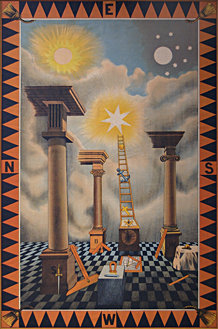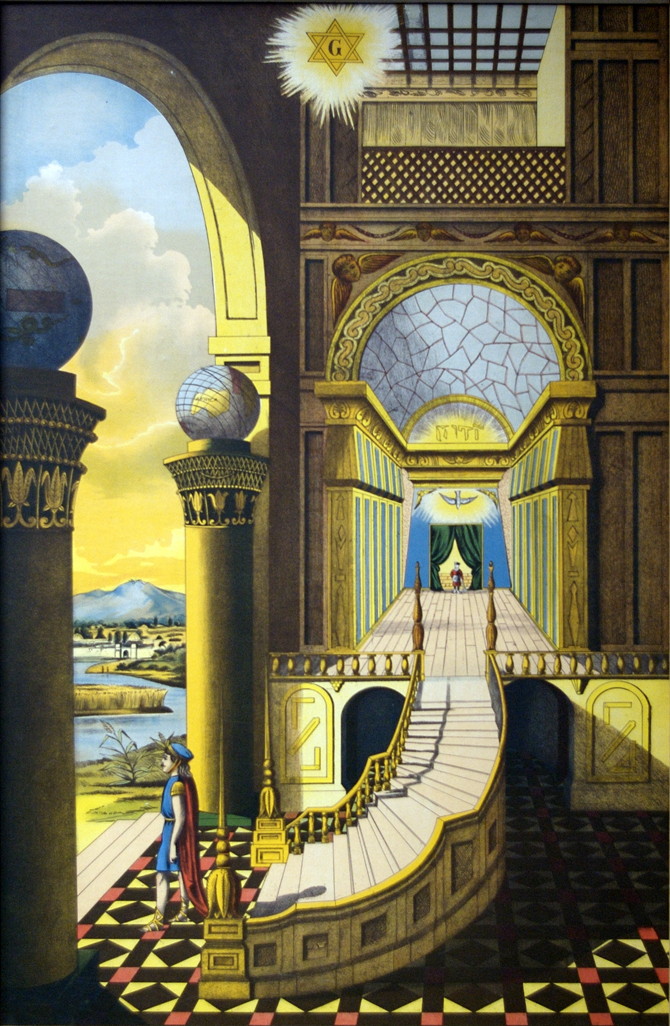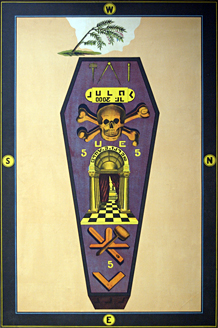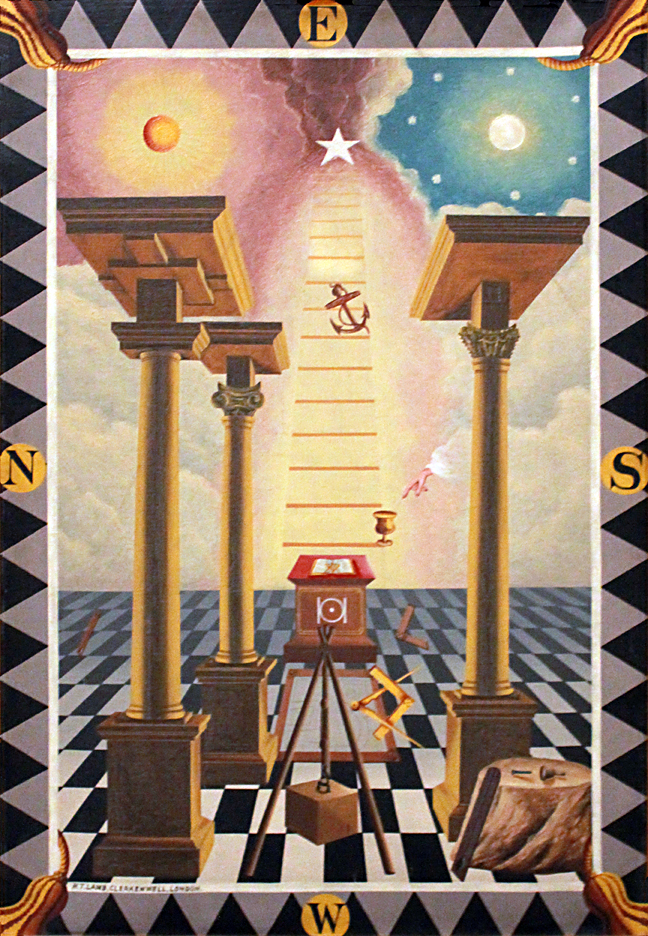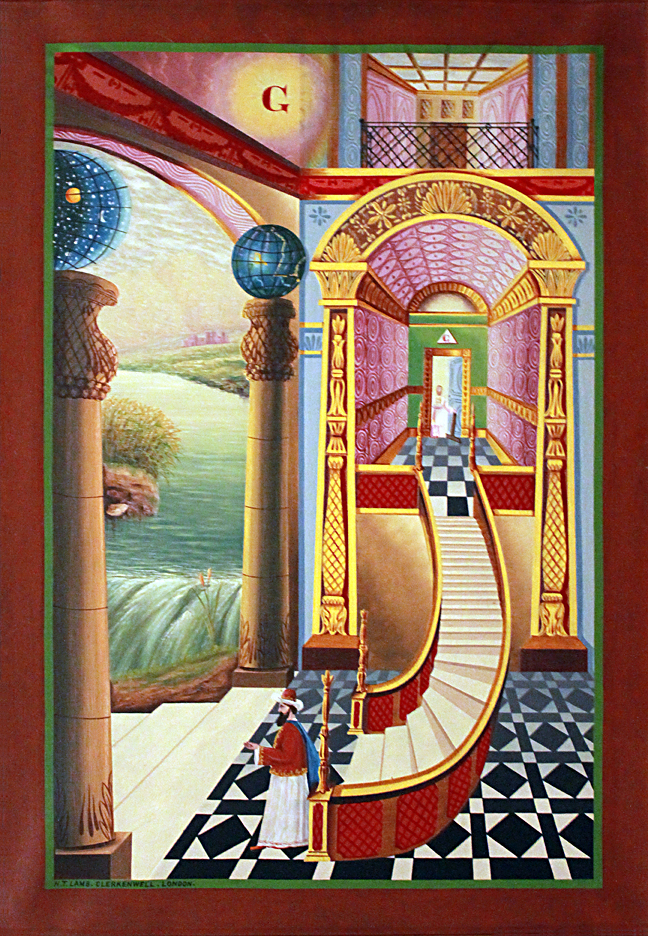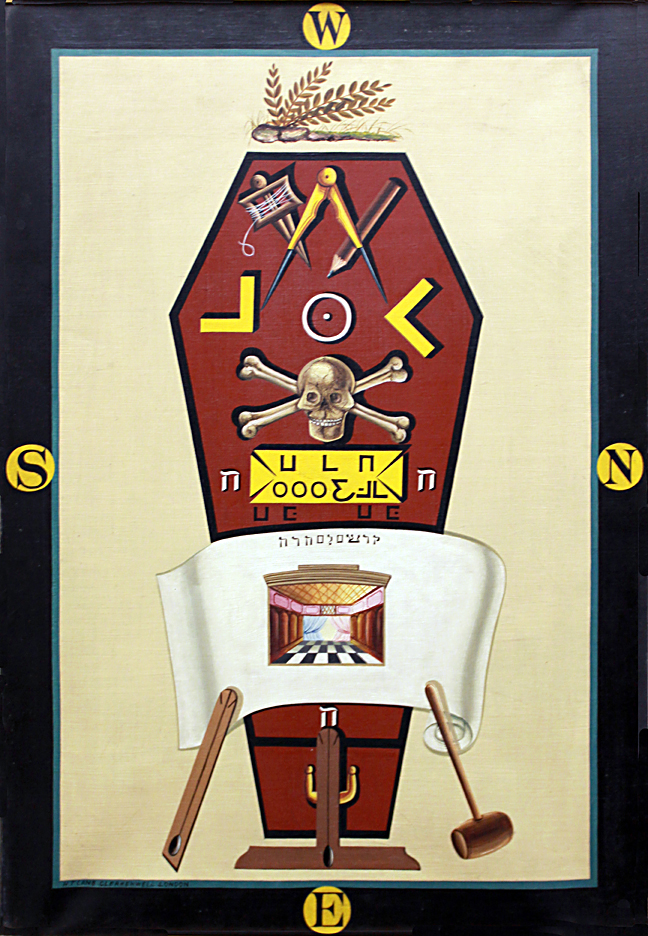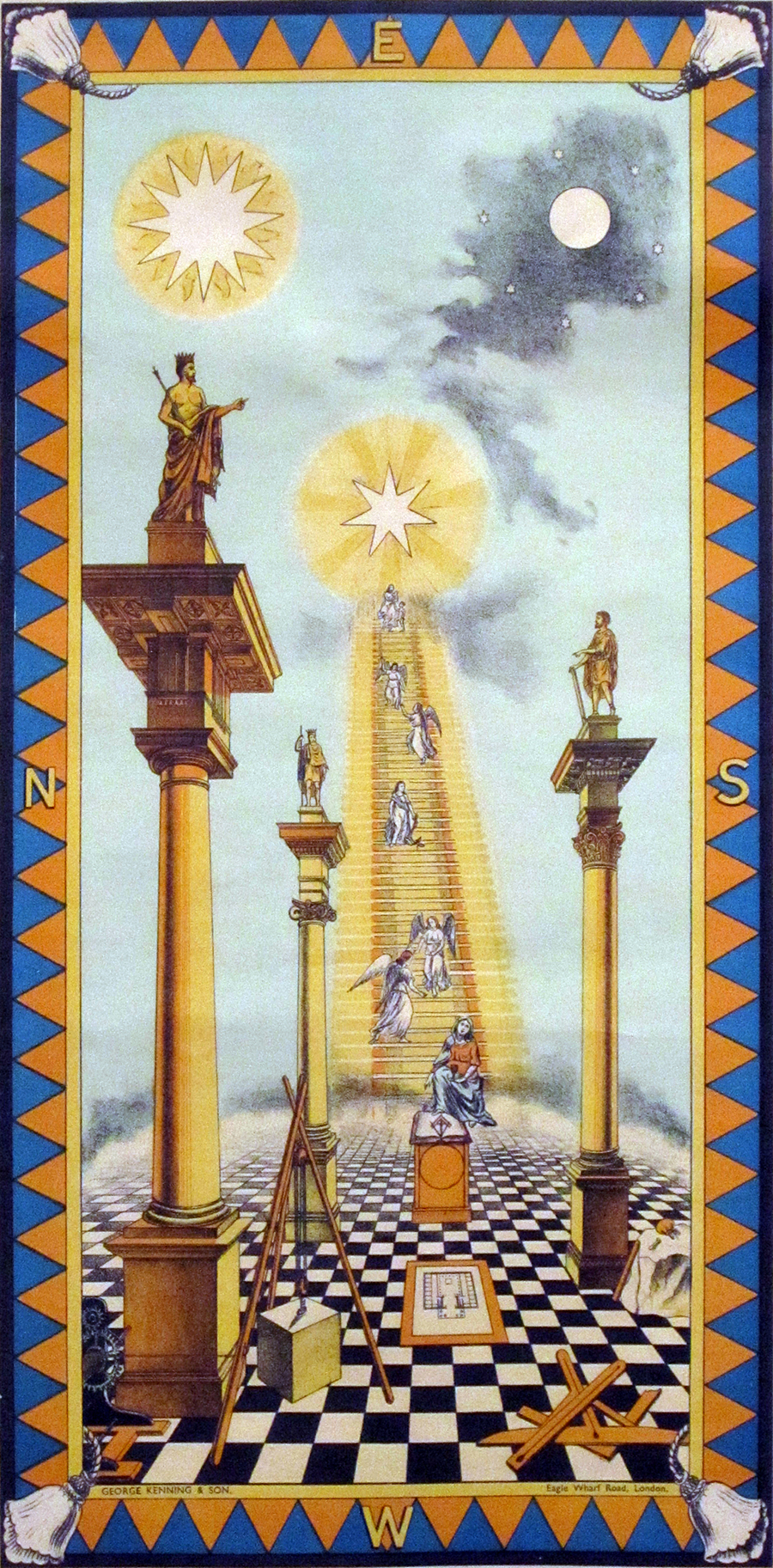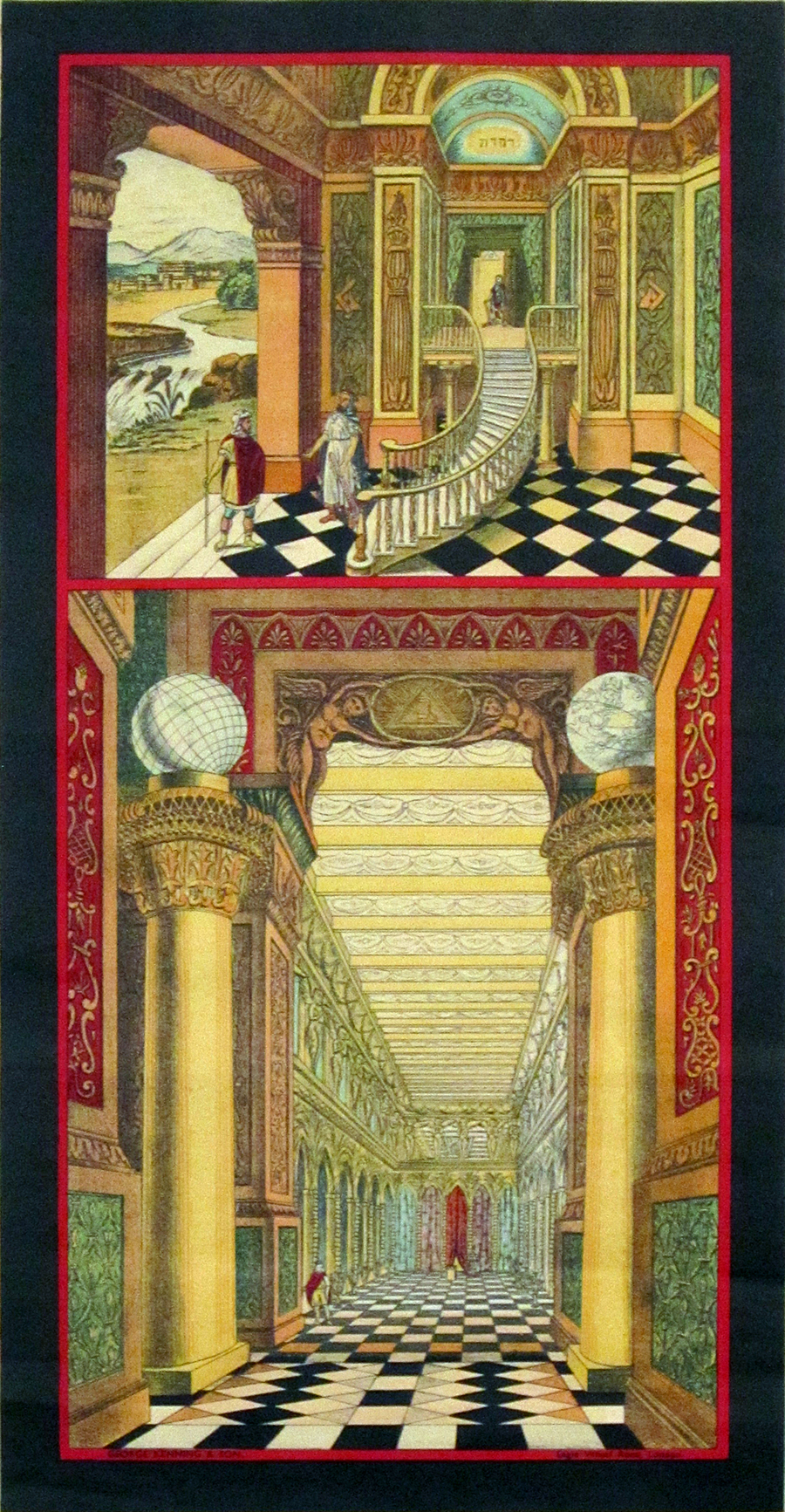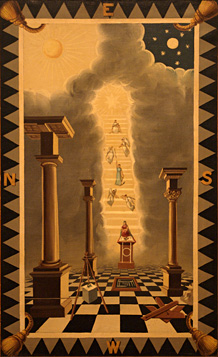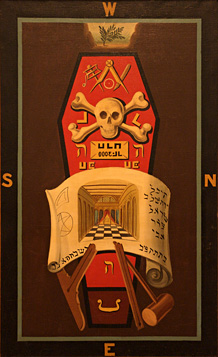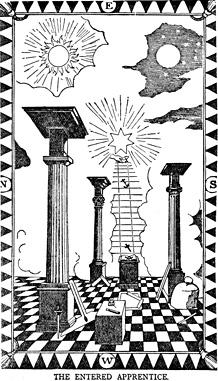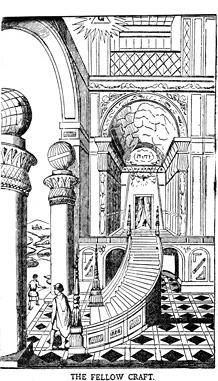|
Tracing Boards
 |
 |  |
 In the early days of Freemasonry the symbols and emblems, used as mnemonics, were drawn in chalk on the lodge room floor, and erased after every meeting. As lodges began to meet in their own buildings they used illustrated floorcloths which developed into the modern tracing boards. This transition was not smooth:
"It having been represented to Grand Lodge that a Painted Cloth containing the Flooring of a Master's Lodge was hanging publicly expressed in a painter's shop, and they, considering that the same might be of pernicious consequences to Masonry, ordered the same to be sent for; and, in regard that the use of such painted Floorings was expressly forbid, instruct the Lodge of St. Andrew's (to whom it belonged) not in future to use any such Floors."
David Murray Lyon, History of the Lodge of Edinburgh, (Mary's Chapel), Number 1 Edinburgh : William Blackwood and Sons, 1873. Cited in The Builder Magazine, April 1926, vol. xii, no. 4.
In the early days of Freemasonry the symbols and emblems, used as mnemonics, were drawn in chalk on the lodge room floor, and erased after every meeting. As lodges began to meet in their own buildings they used illustrated floorcloths which developed into the modern tracing boards. This transition was not smooth:
"It having been represented to Grand Lodge that a Painted Cloth containing the Flooring of a Master's Lodge was hanging publicly expressed in a painter's shop, and they, considering that the same might be of pernicious consequences to Masonry, ordered the same to be sent for; and, in regard that the use of such painted Floorings was expressly forbid, instruct the Lodge of St. Andrew's (to whom it belonged) not in future to use any such Floors."
David Murray Lyon, History of the Lodge of Edinburgh, (Mary's Chapel), Number 1 Edinburgh : William Blackwood and Sons, 1873. Cited in The Builder Magazine, April 1926, vol. xii, no. 4.
|
 |
 |
 |
Canadian Work in British Columbia
|
|
Kamloops Lodge No. 10, Kamloops
|
|
Cariboo Lodge No. 4, Barkerville
|
|
Duke of Connaught Lodge No. 64, North Vancouver
|
|
Lectures of the Three Degrees
|
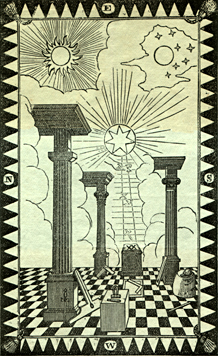
| |
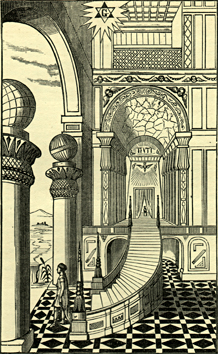
| |
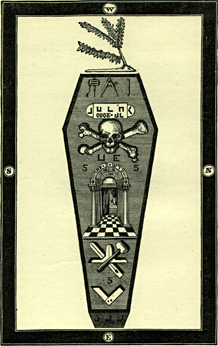
|
|
Entered Apprentice (1876)
|
|
Fellowcraft
|
|
Master Mason
|
|
The Lectures of the Three Degrees of Craft Masonry (Complete) a new and revised edition, with Wood-Cut Illustrations of the Three Tracing Boards, The Ceremony of Installation, and an appendix. Uniform with "The Perfect Ceremonies of Craft Masonry," The two works forming the only Complete and Accurate Manual to everything in the Three Degrees. all rights reserved. Privately Printed for A. Lewis. 1874.
|
Also see : ""History of the tracing board", Mark S. Dwor. Vancouver : Vancouver Grand Masonic Day, 1999 ; "Ars Quatuor Coronatorum. Vol. 64 (1953) p. 79. Transactions of Quatuor Coronati Lodge No. 2076: London.
|
![[Grand Lodge]](../../images/hedn.jpg)

